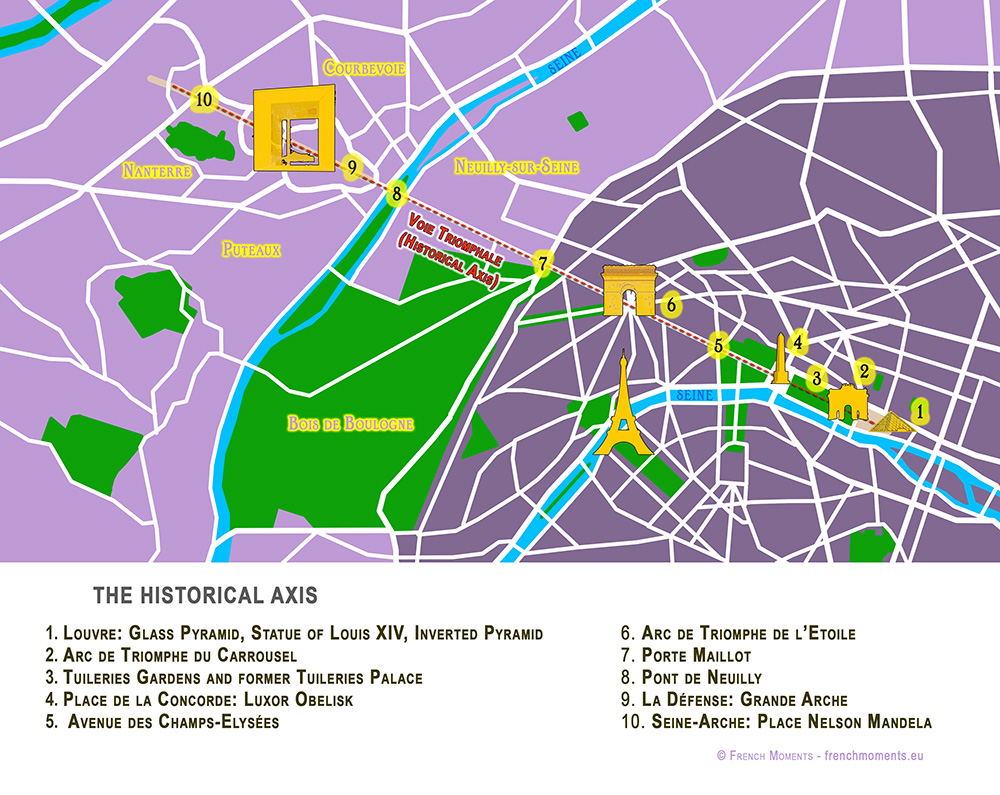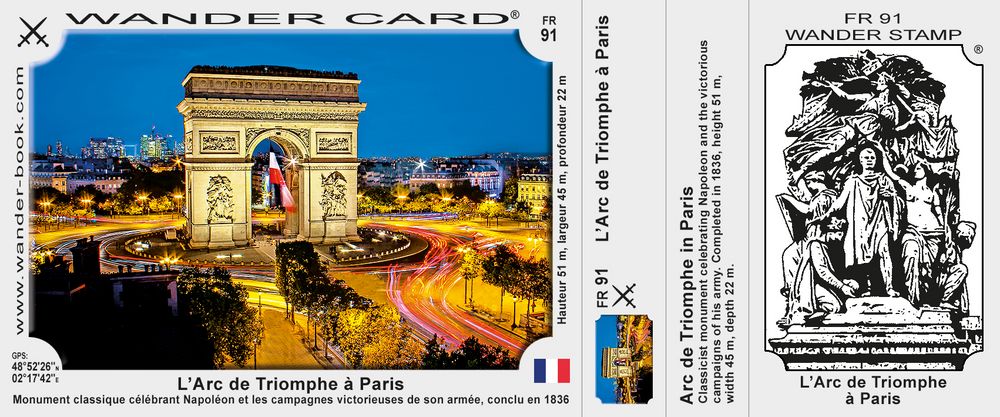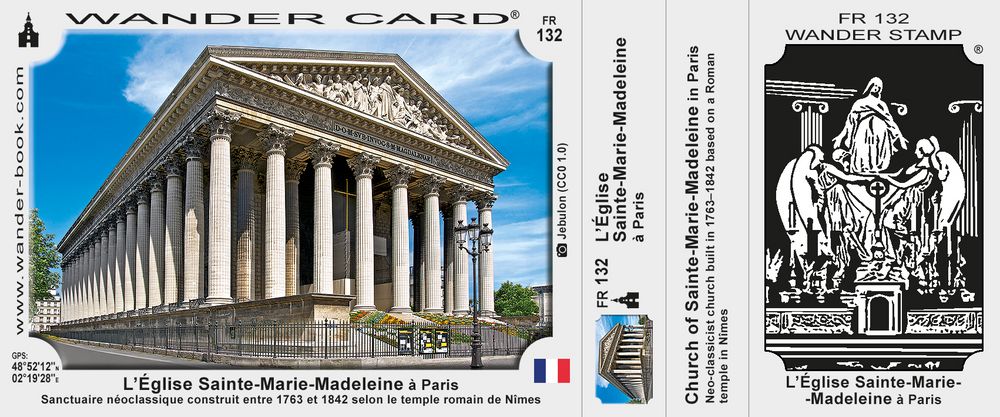|
|
General: SAINT BERNARD CLAIRVAUX STATUE ON EGLISE DE LA MADELEINE IN PARIS
Elegir otro panel de mensajes |
|
|
HD photographs of Saint Bernard statue on Eglise de la Madeleine in Paris - Page 1029
We were in the 8th Arrondissement of Paris at the Eglise de la Madeleine, when we took these high definition photos showing a statue depicting Saint Bernard, which was sculpted by Honore Husson.
Paris Statues
- << Previous 1021 1022 1023 1024 1025 1026 1027 1028 1029 1030 Next >>
This first HD photo shows one of thirty-four different saints that are located on the facades of the Madeleine Church, with this one depicting Saint Bernard, which was instigated by the architect Jacques Marie Huve and commissioned by the French state, it was produced in stone back in 1837 while the edifice was still under construction.
Yet here you can see a close up photograph showing some of the detailing that went into producing this Saint Bernard statue, which was by Honore Jean Aristide Husson who was born in Paris in 1803 and entered the Ecole des Beaux Arts under David d'Angers to become a French sculptor, winning the Prix de Rome in 1830.
Honore Jean Aristide Husson, often just known as Honore Husson, received many different public commissions for statues, three of which are part of the series of famous men depicted on the facades of The Louvre, but he also worked on decorations for different tourist attractions like one of the fountains at the Place de la Concorde and several for different churches including the Eglise de la Madeleine.
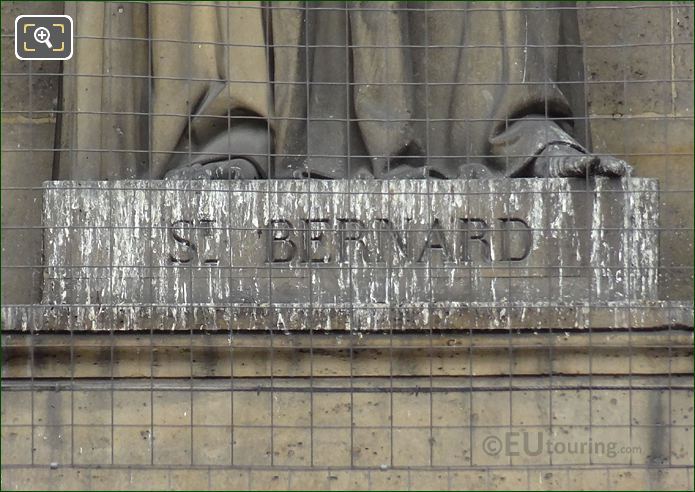 Now Saint Bernard was born to a noble family and studied literature in order that he could study the bible, and becoming a monk, he is also known as Saint Bernard of Clairvaux, due to the fact that he founded a monastery he named Claire Vallee, or Clairvaux, he was pronounced an Abbot by the bishop who was head of theology at the Notre Dame de Paris.
The theology and Mariology of Bernard have continued to be of major importance throughout the centuries and he was the first Cistercian monk to be placed on the Roman calendar of saints when canonized by Pope Alexander III on 18th January 1174, and 800 years after his death Saint Bernard was also given the title of Doctor of the Church by Pope Pius VIII, with his feast day being 20th August, the day Saint Bernard passed away in 1153.
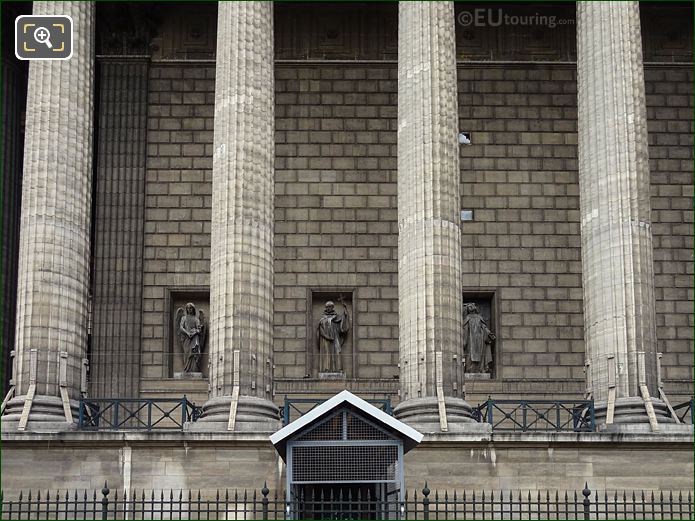 So this image shows the location of the Saint Bernard statue within a niche on the eastern portico facade of the Eglise de la Madeleine, and this can be seen through the well recognisable Corinthian columns from the square named after this famous church, where even the funeral of Chopin took place.
https://www.eutouring.com/images_paris_statues_1029.html |
|
|
|
|
Su Orden del Císter[editar]
Abad del Císter[editar]
A los 23 años, en el año 1113, ingresó en la Orden del Císter. Dos años después, Esteban Harding, el abad de Císter, le envió a fundar una de las primeras fundaciones cistercienses, el monasterio de Claraval, del que fue designado abad, puesto que ocupó hasta el final de su vida.
La orden, entonces, estaba en formación. Esteban Harding era el tercer abad que tenía la orden, y en 1119 dotó al Císter de una regla propia, la Carta de caridad, en la que se establecían las normas comunitarias de total pobreza, de obediencia a los obispos y de dedicación al culto divino con dejación de las ciencias profanas.
Bernardo participó personalmente en la formación del espíritu cisterciense y fue el artífice de la gran difusión de la orden cisterciense, pasando del único monasterio cuando ingresó a 343 cuando murió, de los que 168 pertenecían a la filiación de Claraval y 68 fueron fundados por él mismo.
La enorme influencia que alcanzaron los cistercienses se debió a Bernardo que trascendió ampliamente a la orden. Ha sido la figura más destacada de la Orden y es venerado como fundador.28
Císter fue una concepción de la vida monástica medieval totalmente distinta a Cluny. La regla cisterciense era, en la práctica, una crítica de la de Cluny. Esta crítica a los cluniacenses, la concretó Bernardo en 1124, en su escrito Apología a Guillermo:
La iglesia relumbra por todas partes, pero los pobres tienen hambre. Los muros de la iglesia están cubiertos de oro, pero los hijos de la iglesia siguen desnudos. Por Dios, ya que no os avergonzáis de tantas estupideces, lamentad al menos tantos gastos.
Apología a Guillermo
A partir de la Apología a Guillermo, la regla cisterciense apareció como una reacción contra los excesos cluniacenses. Si durante el siglo xi los monjes cluniacenses habían asumido un gran protagonismo dentro de la iglesia, ocupando sus más altos cargos y ejerciendo su influencia sobre el poder civil, en el siglo xii ese papel les correspondió desempeñarlo a los cistercienses.
Inspirador de la arquitectura cisterciense[editar]
 Claustro de la abadía de Fontenay
Su Apología a Guillermo estableció también los criterios teóricos que luego se emplearían en la construcción de todas las abadías cistercienses. En este escrito, Bernardo criticó duramente la escultura, la pintura, los adornos y las dimensiones excesivas de las Iglesias de los cluniacenses. Partiendo del espíritu cisterciense de pobreza y ascetismo riguroso, llegó a la conclusión de que sus monjes, que habían renunciado a las bondades del mundo, no precisaban de nada de esto para reflexionar en la ley de Dios. La crítica la desplegó sobre dos ejes. En primer lugar, la pobreza voluntaria: las esculturas y adornos eran un gasto inútil: despilfarran el pan de los pobres. En segundo lugar, rechazaba también las imágenes porque distraían la atención de los monjes, los apartaban de encontrar a Dios a través de la Escritura.
Cuando, en 1135, tenían unas 90 abadías y aumentaban a un ritmo de 10 nuevas por año, Bernardo debió pensar que la orden estaba consolidada y con un crecimiento desmedido siendo urgente un modelo de abadía que garantizase la uniformidad de la Orden. También debió reflexionar que la orden no podía seguir con las efímeras construcciones de madera y adobe, precisando monasterios en piedra que sirviesen a las generaciones futuras de monjes.
Ello lo concretó en la construcción en piedra de las dos primeras abadías, Claraval II (a partir de 1135) y Fontenay (comenzada en 1137), que se construyeron de forma simultánea. En las dos intervino de forma decisiva, ya que de Claraval era su abad y Fontenay era filial suya. Él fue el inspirador de ambas construcciones y de sus soluciones formales. Para él, la arquitectura cisterciense debía reflejar el ascetismo y la pobreza absoluta llevada hasta un desposeimiento total que practicaban a diario y que constituía el espíritu del Císter. Así terminó definiendo una estética de simplificación y desnudez que pretendía transmitir los ideales de la orden: silencio, contemplación, ascetismo y pobreza.
Estas primeras abadías se construyeron en estilo románico borgoñés, que había alcanzado toda su plenitud: (bóveda de cañón apuntada y bóveda de arista). Posteriormente, cuando en 1140, surgió el estilo gótico en la benedictina abadía de san Denis, los cistercienses aceptaron rápidamente algunos conceptos del nuevo estilo y empezaron a construir en los dos estilos, siendo frecuentes las abadías donde conviven dependencias románicas y góticas de la misma época. Con el paso del tiempo, el románico se abandonó.
Al prescindir de todo lo superfluo, el estilo cisterciense consiguió unos espacios desnudos, conceptuales y originales que lo hace plenamente identificable.
Influencia en el papa cisterciense Eugenio III[editar]
Eugenio III era hijo espiritual de Bernardo. Como se ha explicado, antes de ser elegido papa, estuvo 10 años en Claraval siendo monje bajo la autoridad espiritual de su abad Bernardo. Después, durante otros 5 años, fue abad de un monasterio filial de Claraval, por lo tanto, seguía manteniendo esa relación de dependencia espiritual.
Ya siendo papa, mantenían frecuente correspondencia entre ellos, pidiéndole Eugenio, que le escribiera un tratado sobre las obligaciones de ser papa. El abad así lo hizo y escribió el tratado De Consideratione en 5 libros. El primero lo escribió en 1149, el segundo en 1150, el tercero después del desastre de la cruzada en 1152 y los dos últimos a continuación. Es su tratado más conocido y aunque lo escribió para el papa Eugenio, en la práctica, lo estaba haciendo también para todos los papas posteriores. De hecho, se conoce la importancia que muchos papas han dado a este texto.
Bernardo seguía sintiéndose su padre espiritual, así lo manifestó repetidamente en el prólogo de De Consideratione: «el amor que os profeso no os considera como Señor, os reconoce por hijo suyo entre las insignias y el esplendor de vuestra excelsa dignidad...Os amé cuando eras pobre, igual os he de amar hecho padre de los pobres y de los ricos. Porque bien os conozco, no por haber sido hecho padre de los pobres dejáis de ser pobre de espíritu».
En este escrito, insiste en la necesidad de la vida interior y de la oración para aquellos que tienen las mayores responsabilidades de la Iglesia. Escribió sobre el peligro de dejarse llevar por los asuntos de Estado y descuidar la oración y las realidades de lo alto.
Sobre los poderes del papa, le escribió defendiendo la supremacía del poder espiritual y el derecho de la Iglesia a emplear los ejércitos seglares Se basaba en las palabras que los apóstoles dijeron a Jesús cuando lo apresaron, recogidas en el Evangelio de san Lucas, que él interpretó para fundamentar de nuevo «la doctrina de las dos espadas», presente en el pensamiento cristiano desde los inicios de la Edad Media:
Si la espada material no perteneciese a la Iglesia, el Señor no habría replicado «Es bastante» a los apóstoles cuando le dijeron «Aquí hay dos espadas», sino «Es demasiado». Por tanto, de la Iglesia son la espada espiritual y la espada material, pero esta ha de ser manejada para la Iglesia, y aquella, por la Iglesia.
De consideratione
También le escribió que el poder del papa no es ilimitado:
Yerras si, como creo, piensas que tu poder apostólico es el único instituido por Dios (dice el apóstol:) «No hay poder que no proceda de Dios...Todos han de estar sometidos a las autoridades superiores». No dice «la autoridad superior», como si se refiriese a una, sino «las autoridades superiores», como si se refiriese a varias. Por tanto, tu poder no es el único que procede de Dios, también proceden de «Él», el poder de los medianos y de los pequeños.
De consideratione
Estaba convencido de que todos los cargos de la Iglesia procedían directamente de Dios y así lo escribió al papa:
Reflexiona que la santa Iglesia romana no es la señora, sino la madre de las iglesias. Vos no sois el señor de los obispos, sino uno de ellos.
De consideratione
|
|
|
|
|
| Santa Bernardita Soubirous |
 |
| Información personal |
| Nombre de nacimiento |
Maria-Bernada Sobirós (original en occitano)
Marie-Bernarde Soubirous (en francés)
María Bernarda Soubirous (en español) |
| Nombre en francés |
Bernadette Soubirous ii  |
| Nacimiento |
7 de enero de 1844
 Lourdes, Francia Lourdes, Francia |
| Fallecimiento |
16 de abril de 1879 (35 años)
 Nevers, Francia Nevers, Francia |
| Causa de muerte |
Tuberculosis  |
| Sepultura |
Nièvre  |
| Nacionalidad |
Francesa |
| Religión |
Iglesia católica  |
| Lengua materna |
Occitano |
| Familia |
| Padres |
François Sobirós
Louise Castérot |
| Información profesional |
| Ocupación |
Monja  |
| Información religiosa |
| Beatificación |
14 de junio de 1925 |
| Canonización |
8 de diciembre de 1933 |
| Festividad |
16 de abril
18 de febrero (Culto local) |
| Venerada en |
Iglesia católica |
| Patronazgo |
Si bien la Virgen María en su advocación de Nuestra Señora de Lourdes es considerada por la Iglesia católica la principal patrona de los enfermos, se asocia por extensión a Bernadette con la protección de los mismos, como también de personas ridiculizadas por su piedad, de pobres, y de pastoras y pastores |
| Santuario |
Santuario de Lourdes |
| Orden religiosa |
Hijas de la Caridad de Nevers |
|
|
|
|
|
|
|
|
|
Los templarios y el culto a las Vírgenes Negras (II). San Bernardo y María Magdalena

Isis con Horus niño
La influencia que tuvo S. Bernardo en la Orden es indiscutible y los caballeros templarios heredaron los antiguos ritos de la Francia septentrional que evolucionaron gracias al santo considerado como el último de los druidas. Tras la derrota en S. Juan de Acre en 1291 se pierde Tierra Santa y son obligados a marcharse todos los cristianos; es entonces cuando la Orden del Temple se refugia en Chipre, donde tenían muchas posesiones. La Casa de María en Nazaret, la «Santa Casa», fue piedra a piedra desmontada y trasladada en los barcos templarios a Italia. La supresión del Temple supuso la diáspora de los caballeros; algunos ingresaron en otras ordenes y otros fueron encarcelados y condenados a cadena perpetua por los inquisidores. ¿Qué papel juega María Magdalena en la orden? Para muchos autores María Magdalena era «Nuestra Señora» de la casa de Betania, de modo que cuando se utiliza la advocación a Nuestra Señora se están refiriendo a ella y no a la Virgen María como la iglesia católica se empeña en proclamar; de hecho en todas las catedrales e iglesias del Temple, María Magdalena ocupa un lugar destacado. Por otra parte, cuando S. Bernardo hace el llamamiento para la segunda cruzada desde la iglesia de Santa María Magdalena en Vézelay, lo hace en unos términos que parece que está reclamando las tierras de la estirpe sagrada de María Magdalena. A todo ello se añade el hecho de que los restos mortales de la santa, descubiertos en 1279 por Carlos II de Anjou, se hallaban custodiados en la cripta de Saint Maximin. Por todo ello muchos autores afirman que María Magdalena sería en realidad la esposa de Jesucristo y habría que preservar su estirpe real. Volviendo a los templarios, parece ser que estos descubren en las caballerizas del Templo de Salomón algo que solo comunican al papa Honorio II, al Patriarca de Jerusalén y a S. Bernardo de Claraval. Este hecho o la información que poseía S. Bernardo conduce a los caballeros hasta Egipto y más concretamente al templo de la diosa egipcia Isis en la isla de Philae. (continuará)
|
|
|
|
|
The Nard of Mary-Magdalene
My fools for senses,
Today, we shall be looking for an answer centuries of commentors failed to provide. Following our Review of Irrévérent and its unusual accord of oud and lavender, we decided to ponder awhile on this last ingredient which we thought we knew too well. Most of all, we wanted to envision it with a new eye : that of theology. Of history and literature and cooking and anthropology.
For indeed lavender passed through many cultures and through many readings did we stumble upon a most startling fact : that nard and lavender, in the Bible, are one. Thus, my fools for senses, let us discover today what really hid behind the Nard of Mary-Magdalene.
All good adventure movies start with a writing on a wall or in a book in our case. In the Bible, really. “Mary, having taken an ounce of pure nard anointed with it the feet of Jesus” This moving scene will very lively raise more than one question in the reader's mind : whatever is nard and why use it to anoint the Christ's feet ?
To properly grasp what nard is or was, one must look at its history and all the times it was mentioned. As far as we can tell around the Mediteranean Sea, Dioscorides spoke of nard in De Materia Medica. Of more than one actually. He lists a Syrian nard, an Indian nard and a Celtic nard. According to him, the Syrian nard got its name from the fact that it grows on the western slope of a mountain range -he was probably referring to the Hindu Kush. He also says its sweet aroma is close to that of nard from Cyprus. Indian nard is apparently smoother and more watery considering it grows in the Gange basin. The Celtic nard at last is both sweet and suave. He also mentions a wild nard growing in the mountains known already by the Gauls. As for Pliny the Elder, in his Natural History he lists a numerous variety of nards and one in particular that was so sweet-smelling that it was a most sought-after oil.
Roman literature is also a good resource when it comes to perfumes. In his Odes –the tenth to be more precise- Horace speaks of an « Assyrique nardo », Assyrian nard, whereas Petronius in his Cena Trimalchionis has one of his characters open an « ampullam nardi », a phial of nard, which was then rubbed on al the guests’ noses. Knowing the musty, musky scent of nard, one might be surprised upon reading so many lauds to it and the Roman nobility anointing their noses with it as they end a banquet. However, there happens to be mentions of nard in the Apicius, a Roman cookbook, according to which a few drops of nard might be useful to freshen a stale broth.
This occurrence of nard in a cookbook really raised our eyebrows and convinced us that nard was in fact lavender but how did the Romans end up confusing both ?
One must go back to the origins. Nard was named after the Assyrian city of Nuhadra –in actual Iraq- sitting on the banks of the Tigris river. Probably known for trading precious oils, one might say it was the starting point of spikenard trading routes going west into the Roman Empire although the nard existed way before the Romans. Already is it seen in a recipe for the anointing oil of Parthian kings as well as in Arrian’s Anabasis in a curious tale where the soldiers, as they traverse the desert of Gadrosia, find themselves trampling a « grass of nard » which then exhaled a sweet-smelling aroma. Research has now shown that this so-called nard was in fact…lemongrass.
To establish a link between the freshness of lemongrass and that of lavender isn’t much of a stretch.
Moreover, we looked for answers into the Eastern Orthodox tradition, which has gone uninterrupted since the early years of our era. After having ordered many an incense and nard-scented oils, we realised they were in fact all perfumed with lavender. Thus, we wondered why Mary-Magdalene anointed Jesus’ feet with nard –or lavender.
For so, let us dive into the writings. In the famous passage, St John writes : « nardou pistikes », « pure nard ». Some translated it into « true nard » as opposed to the fake one being lavender however we still think that « pistikes » has nothing to do with botanics. The Peshitta, an Aramaic translation of the Gospels, wrote : « dnardeen reeshaya ». Reeshaya here means « the best », of great quality. The symbolical use of the word reeshaya is most clearly seen in the Gospel of St Mark where Mary-Magdalene breaks « of pure nard. » on Jesus’ « head ». The Peshitta writes : « dnardeen reeshaya (…) al reesheh dyeshoo » a play on the words « reeshaya » which we’d roughly translate to : she poured the best on the Best.
Why pouring nard, though ? Or rather lavender ?
It is now known that myrrh is a symbol for death. It would thus have been very clever of Mary-Magdalene to anoint Jesus’ feet with it as a sign of his upcoming death and burial but she chose lavender. As such, her anointement is nothing short of a prophecy, lending us precious informations on the secret symbolism hidden behind lavender.
We read how the Ancients confused nard with lavender but we must now explain why they did so for they spoke of spikenard and lavender spike. The first bore its name from the fact its root looked like it was spiking out of the stem. The latter bore its name from its resemblance to an ear of wheat and this is precisely where we need investigate for therein lies the key to understanding the real meaning of lavender and solve a millenial controversy.
When Mary Magdalene poured lavender spike on Jesus’ feet, she accomplished a prophetic gesture of which she had probably no knowledge –as most prophecies in the New Testament. Along with St John whose head lies on Jesus’ chest - announcing the theosis- and the Virgin Mary who looked westward as her baby lay in her arms –announcing the Passion- Mary Magdalene announces the Passion and Resurrection. For as she poured the best on the Best, it is precisely the oil of the best ear of wheat which she poured upon He who compared himself to a « kernel of wheat ». This gesture is a clear reference to the words of Jesus saying on the eve of his death : « Unless a kernel of wheat falls to the ground and dies, it remains only a single seed. But if it dies, it produces many seeds »
The anointing of Jesus’ feet in the Gospel of Saint John heralds that of the myrrh-bearers and his Resurrection and of the Holy Spirit as it shone on his head upon his descent in the Hades, to a crown of light inextinguishable alike.
What we must understand is that lavender is akin to the light which shrouded the Christ as he went down into the Hades. Furthermore, mediaeval traditions will swiftly associate lavender to the virtue of keeping evil and dark spirits at bay. Lavender is a twig of life, fortifying the heart of Men ; it is the scent we smell as we leave a heartwarming feast, saying « I only hope it will give me as much pleasure when I'm dead as it does now when I'm alive. » It the the flower of foreseers, of those who see beyond appearances and the simple planes of existence.
The flower of they who want to trample and have trampled down death. The flower of soldiers as they traverse the desert, the flower of queens and kings chasing away all sorrows and withering of the soul.
Even more so than frankincense, lavender and its hues of violets and blues, is the perfect flower to connect us to the ethereal worlds. It clings to our soul and lifts it up and says to all and to us foremost that Love, over death, has won.
Your goodness and nard will follow me,
All the days of my life.
https://www.theperfumechronicles.com/chronicles/nard |
|
|
|
|
   
The Nard of Mary-Magdalene
My fools for senses,
Today, we shall be looking for an answer centuries of commentors failed to provide. Following our Review of Irrévérent and its unusual accord of oud and lavender, we decided to ponder awhile on this last ingredient which we thought we knew too well. Most of all, we wanted to envision it with a new eye : that of theology. Of history and literature and cooking and anthropology.
For indeed lavender passed through many cultures and through many readings did we stumble upon a most startling fact : that nard and lavender, in the Bible, are one. Thus, my fools for senses, let us discover today what really hid behind the Nard of Mary-Magdalene.
All good adventure movies start with a writing on a wall or in a book in our case. In the Bible, really. “Mary, having taken an ounce of pure nard anointed with it the feet of Jesus” This moving scene will very lively raise more than one question in the reader's mind : whatever is nard and why use it to anoint the Christ's feet ?
To properly grasp what nard is or was, one must look at its history and all the times it was mentioned. As far as we can tell around the Mediteranean Sea, Dioscorides spoke of nard in De Materia Medica. Of more than one actually. He lists a Syrian nard, an Indian nard and a Celtic nard. According to him, the Syrian nard got its name from the fact that it grows on the western slope of a mountain range -he was probably referring to the Hindu Kush. He also says its sweet aroma is close to that of nard from Cyprus. Indian nard is apparently smoother and more watery considering it grows in the Gange basin. The Celtic nard at last is both sweet and suave. He also mentions a wild nard growing in the mountains known already by the Gauls. As for Pliny the Elder, in his Natural History he lists a numerous variety of nards and one in particular that was so sweet-smelling that it was a most sought-after oil.
Roman literature is also a good resource when it comes to perfumes. In his Odes –the tenth to be more precise- Horace speaks of an « Assyrique nardo », Assyrian nard, whereas Petronius in his Cena Trimalchionis has one of his characters open an « ampullam nardi », a phial of nard, which was then rubbed on al the guests’ noses. Knowing the musty, musky scent of nard, one might be surprised upon reading so many lauds to it and the Roman nobility anointing their noses with it as they end a banquet. However, there happens to be mentions of nard in the Apicius, a Roman cookbook, according to which a few drops of nard might be useful to freshen a stale broth.
This occurrence of nard in a cookbook really raised our eyebrows and convinced us that nard was in fact lavender but how did the Romans end up confusing both ?
One must go back to the origins. Nard was named after the Assyrian city of Nuhadra –in actual Iraq- sitting on the banks of the Tigris river. Probably known for trading precious oils, one might say it was the starting point of spikenard trading routes going west into the Roman Empire although the nard existed way before the Romans. Already is it seen in a recipe for the anointing oil of Parthian kings as well as in Arrian’s Anabasis in a curious tale where the soldiers, as they traverse the desert of Gadrosia, find themselves trampling a « grass of nard » which then exhaled a sweet-smelling aroma. Research has now shown that this so-called nard was in fact…lemongrass.
To establish a link between the freshness of lemongrass and that of lavender isn’t much of a stretch.
Moreover, we looked for answers into the Eastern Orthodox tradition, which has gone uninterrupted since the early years of our era. After having ordered many an incense and nard-scented oils, we realised they were in fact all perfumed with lavender. Thus, we wondered why Mary-Magdalene anointed Jesus’ feet with nard –or lavender.
For so, let us dive into the writings. In the famous passage, St John writes : « nardou pistikes », « pure nard ». Some translated it into « true nard » as opposed to the fake one being lavender however we still think that « pistikes » has nothing to do with botanics. The Peshitta, an Aramaic translation of the Gospels, wrote : « dnardeen reeshaya ». Reeshaya here means « the best », of great quality. The symbolical use of the word reeshaya is most clearly seen in the Gospel of St Mark where Mary-Magdalene breaks « of pure nard. » on Jesus’ « head ». The Peshitta writes : « dnardeen reeshaya (…) al reesheh dyeshoo » a play on the words « reeshaya » which we’d roughly translate to : she poured the best on the Best.
Why pouring nard, though ? Or rather lavender ?
It is now known that myrrh is a symbol for death. It would thus have been very clever of Mary-Magdalene to anoint Jesus’ feet with it as a sign of his upcoming death and burial but she chose lavender. As such, her anointement is nothing short of a prophecy, lending us precious informations on the secret symbolism hidden behind lavender.
We read how the Ancients confused nard with lavender but we must now explain why they did so for they spoke of spikenard and lavender spike. The first bore its name from the fact its root looked like it was spiking out of the stem. The latter bore its name from its resemblance to an ear of wheat and this is precisely where we need investigate for therein lies the key to understanding the real meaning of lavender and solve a millenial controversy.
When Mary Magdalene poured lavender spike on Jesus’ feet, she accomplished a prophetic gesture of which she had probably no knowledge –as most prophecies in the New Testament. Along with St John whose head lies on Jesus’ chest - announcing the theosis- and the Virgin Mary who looked westward as her baby lay in her arms –announcing the Passion- Mary Magdalene announces the Passion and Resurrection. For as she poured the best on the Best, it is precisely the oil of the best ear of wheat which she poured upon He who compared himself to a « kernel of wheat ». This gesture is a clear reference to the words of Jesus saying on the eve of his death : « Unless a kernel of wheat falls to the ground and dies, it remains only a single seed. But if it dies, it produces many seeds »
The anointing of Jesus’ feet in the Gospel of Saint John heralds that of the myrrh-bearers and his Resurrection and of the Holy Spirit as it shone on his head upon his descent in the Hades, to a crown of light inextinguishable alike.
What we must understand is that lavender is akin to the light which shrouded the Christ as he went down into the Hades. Furthermore, mediaeval traditions will swiftly associate lavender to the virtue of keeping evil and dark spirits at bay. Lavender is a twig of life, fortifying the heart of Men ; it is the scent we smell as we leave a heartwarming feast, saying « I only hope it will give me as much pleasure when I'm dead as it does now when I'm alive. » It the the flower of foreseers, of those who see beyond appearances and the simple planes of existence.
The flower of they who want to trample and have trampled down death. The flower of soldiers as they traverse the desert, the flower of queens and kings chasing away all sorrows and withering of the soul.
Even more so than frankincense, lavender and its hues of violets and blues, is the perfect flower to connect us to the ethereal worlds. It clings to our soul and lifts it up and says to all and to us foremost that Love, over death, has won.
Your goodness and nard will follow me,
All the days of my life.
https://www.theperfumechronicles.com/chronicles/nard
|
|
|
|
|
Bernard of Clairvaux

Above: Bernard of Clairvaux
by Alan Butler
Born Fontaine de Dijon France 1090
Died Clairvaux, near Troyes, Champagne France August 20th 1153
Bernard of Clairvaux may well represent the most important figure in Templarism. In our opinion past researchers have generally failed to credit St Bernard with the pivotal role he played in the planning, formation and promotion of the infant Templar Order. Whether an ‘intention’ to create an Order of the Templar sort existed prior to the life of St Bernard himself is a matter open to debate. (See ‘The Templar Continuum’ Butler and Dafoe, Templar Books 2,000).
The son of Tocellyn de Sorrell, Bernard was born into a middle-ranking aristocratic family, which held sway over an important region of Burgundy, though with close contacts to the region of Champagne. There is some dispute as to whether Bernard’s father had fought in the storming of Jerusalem in 1099, and indeed whether he died in the Levant. The question appears to be easily answered for in the small Templar type Church in St Bernard’s birthplace there is a marble plaque that states the Church was built by St Bernard’s mother in thanks for the safe return of her husband from the Crusade.
St Bernard was a younger member of an extremely large family. He appears to have received a good, standard education, at Chatillon-sur-Seine, which fitted him, most probably, for a life in the Church, which, of course, is exactly the direction he eventually took. Many stories exist regarding Bernard’s early years – his visions, torments and realisations. All of these were attributed to Bernard after his canonisation and therefore must surely be taken with a pinch of salt. What does seem evident is that Bernard was bright, inquisitive and probably tinged with a sort of genius. Certainly he was a fantastic organiser and possessed a charisma that few could deny.
St Bernard enters history in an indisputable sense at the age of 23 years, when together with a very large group of his brothers, cousins and maybe other kin, (probably between 25 and 30) he rode into the abbey of Citeaux, Dijon. This abbey was the first Cistercian monastery and had been set up somewhat earlier by a small band of dissident monks from Molesmes. Much can be found elsewhere in these pages relating specifically to the Cistercians. At the time of St Bernard’s arrival the abbey was under the guiding hand of Stephen, later St Stephen Harding, an Englishman.
Bernard announced his determination to follow the Cistercian way of life and together with his entourage he swamped the small abbey, swelling the number of brothers there to such an extent that it was inevitable that more abbeys would have to be formed.
Only three years later St Bernard, still an extremely young man, (25 years) was dispatched, together with a small band of monks, to a site at Clairvaux, near Troyes, in Champagne, there to become Abbott of his own establishment. It is known that the land upon which Clairvaux was built was donated by the Count of Champagne, based at the nearby city of Troyes.
St Bernard was a visionary, a man of apparently tremendous religious conviction. He could be irascible and domineering at times, but seems to have been generally venerated and well liked by those around him. Bernard suffered frequent bouts of ill health, almost from the moment he joined the Cistercians. This continued for the remainder of his life and may have demonstrated an inability on the part of his digestive system to cope with the severe diet enjoyed or rather endured by the Cistercians at the time.
Bernard’s influence grew within the established Church of his day. With a mixture of simple, religious zeal and some extremely important family connections, this little man involved himself in the general running, not only of the Cistercian Order, but the Roman Church of his day. Bernard was instrumental in the appointment of GREGORIO PAPARESCHI, Pope Innocent II in the year 1130, despite the fact that not all agencies supported the man for the Papal throne. Bernard walked hundreds of miles and talked to a great number of influential people in order to ensure Innocent’s ultimate acceptance. His success in this endeavour marked St Bernard as probably the most powerful man in Christendom, for as ‘Pope Maker’ he probably had more influence than the Pontiff himself.
This appointment should not be underestimated, for it was Pope Innocent II who formally accepted ‘The Poor Knights of Christ and the Temple of Solomon’ (The Knights Templar) into the Catholic fold. This he did, almost certainly, at the behest of Bernard and possibly as a result of promises he had made to this end at the time Bernard showed him the support which led to the Vatican.
To understand St Bernard’s importance to Cistercianism it is first necessary to study the Order in detail. In brief however it would be fair to suggest that Bernard’s own personality, drive and influence saw the Cistercians growing from a slightly quirky fringe monastic institution to being arguably the most significant component of Christian monasticism that the Middle Ages ever knew.
In addition to this St Bernard consorted with Princes, Kings and Pontiffs, even directly ‘creating’ his own Pope, BERNARDO PAGANELLI DI MONTEMAGNO (Eugnius III) who became Pontiff in 1145. This man had been a noviciate of St Bernard at Clairvaux and was, in all respects, St Bernard’s own man. From this point barely a decision was made in Rome that was not influenced in some way by St Bernard himself.
Much could be written about the ‘nature’ of St Bernard. He was a staunch supporter of the Virgin Mary, a visionary and a man who had a profound belief in an early and very ‘Culdean’ form of Christianity. This is exemplified by the short verse he once wrote.
‘Believe me, for I know, you will find something far greater in the woods than in books. Stones and trees will teach you that which you cannot learn from the masters.’
St Bernard staunchly supported what amounted to an utter veneration of the Virgin Mary for the whole of his life and was also an enthusiastic supporter of a rather strange little extract from the Old Testament, entitled ‘Solomon’s Song of Songs’.
How and why St Bernard became involved in the formation of the Knights Templar may never be fully understood. There is no doubt that he was blood-tied to some of the first Templar Knights, in particular Andre de Montbard, who was his maternal uncle. He may also have been related to the Counts of Champagne, who themselves appear to have been pivotal in the formation of the Templar Order.
For whatever reason St Bernard wrote the first ‘rules’ of the Templar Order. He may have undertaken this task personally and they were based, almost entirely, on the Order adopted by the Cistercians themselves. The Templars were officially declared to be a monastic order under the protection of Church in Troyes in 1139. Bernard went further and insisted that Pope Innocent II recognised this infant order as being solely under the authority of the Pope and no other temporal or ecclesiastical authority. It is a fact that the Templars venerated St Bernard from that moment on, until their own demise in 1307. St Bernard’s influence on the Templars is therefore pivotal to the whole of the movement’s aims and objectives and in our opinion no researcher should ever underestimate Bernard’s importance with this regard.
St Bernard travelled extensively, negotiated in civil disturbances and, surprisingly for the period, was instrumental in preventing a number of pogroms taking place against Jews in various locations within what is present day France. A staunch supporter of an Augustinian view of the mystery of the Christian faith, St Bernard was fiercely opposed to ‘rationalistic’ views of Christianity. In particular he was a staunch opponent of the dialectician ‘Peter Abelard’, a man whom St Bernard virtually destroyed when Abelard refused to accept Bernard’s own criticism of his radical ideas.
Although travelling extensively on many and varied errands during his life, St Bernard always returned to his own abbey of Clairvaux, which it seems (to us at least) had been deliberately built in a location that allowed free travel in all directions. It is suggested that Clairvaux was peopled with all manner of scholars, some of whom may well have been Jewish scribes. It is also true to say that if Citeaux remained the ‘head’ of the Cistercian movement during the life of St Bernard, Clairvaux lay at its heart. Clairvaux became the Mother House of many new Cistercian monasteries, not least of all Fountaines Abbey in Yorkshire, England, which itself was to rise to the rank of most prosperous abbey on English soil.
St Bernard died in Clairvaux on August 20th 1153, a date that would soon become his feast day, for St Bernard was canonised within a few short years of his death. Space here does not permit a full handling of this extraordinary man’s life or his interest in so many subjects, including architecture, music and (probably) ancient manuscripts. After his death a cult of St Bernard rapidly developed. At the time of the French Revolution St Bernard’s skull was taken for safekeeping to Switzerland, eventually finding its way back to Troyes. It is now housed in the Treasury of Troyes Cathedral and can be seen there, together with the skull and thighbone of St Malachy, a friend and contemporary of St Bernard.
A much fuller and more comprehensive detailed biography of St Bernard’s life can be found in ‘The Knights Templar Revealed’ Butler and Dafoe, Constable and Robinson – 2006.
About Us
TemplarHistory.com was started in the fall of 1997 by Stephen Dafoe, a Canadian author who has written several books on the Templars and related subjects.
Read more from our Templar History Archives – Templar History
|
|
|
|
|
| Enviado: 21/10/2024 10:30 |
|
|
|
|
|
 Primer Primer
 Anterior
6 a 20 de 20
Siguiente Anterior
6 a 20 de 20
Siguiente
 Último
Último

|
|
| |
|
|
©2025 - Gabitos - Todos los derechos reservados | |
|
|


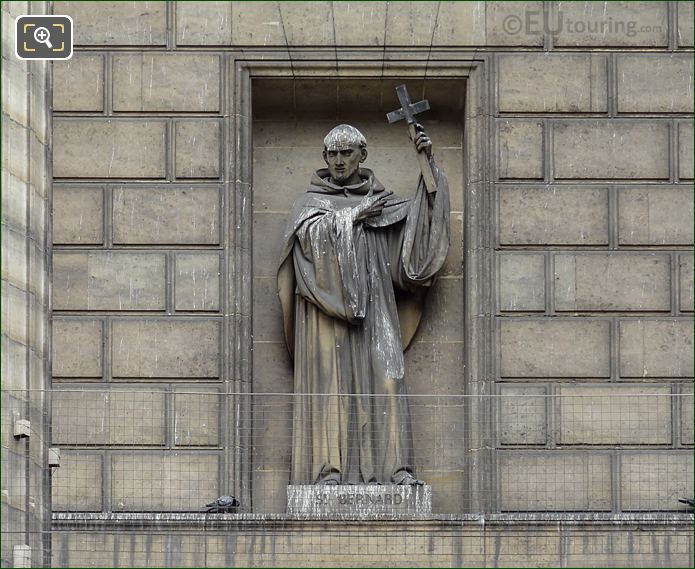
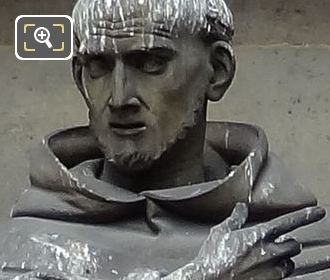





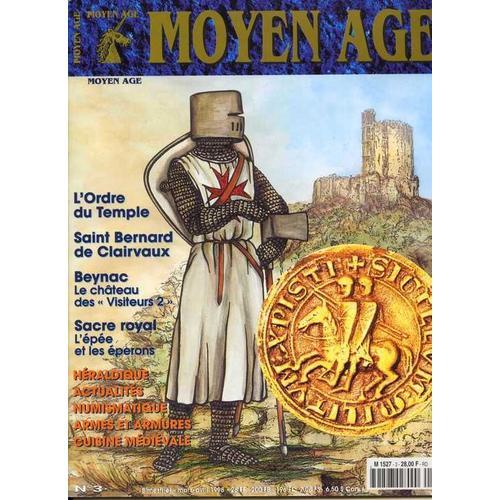
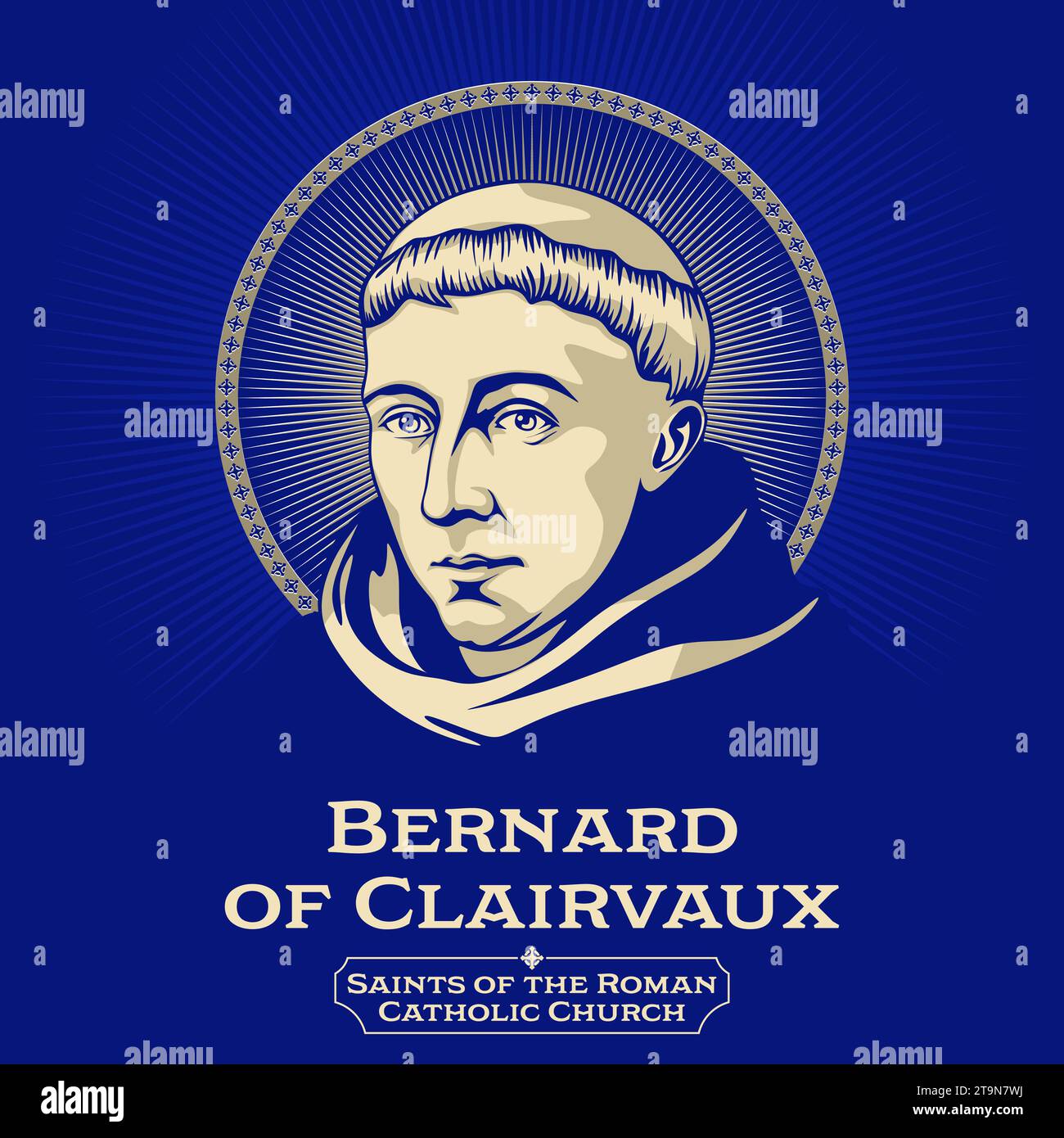













![Regreso Al Fururo III (Back To The Future III) [1990] –, 40% OFF](https://m.media-amazon.com/images/M/MV5BYzgzMDc2YjQtOWM1OS00ZjhhLWJiNjQtMzE3ZTY4MTZiY2ViXkEyXkFqcGdeQXVyNDQ0MTYzMDA@._V1_.jpg)









